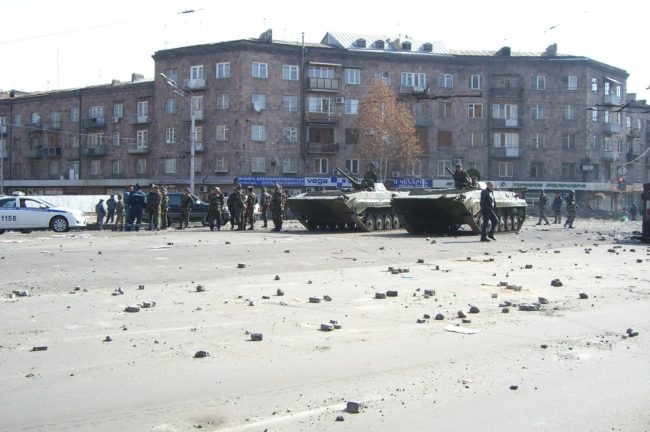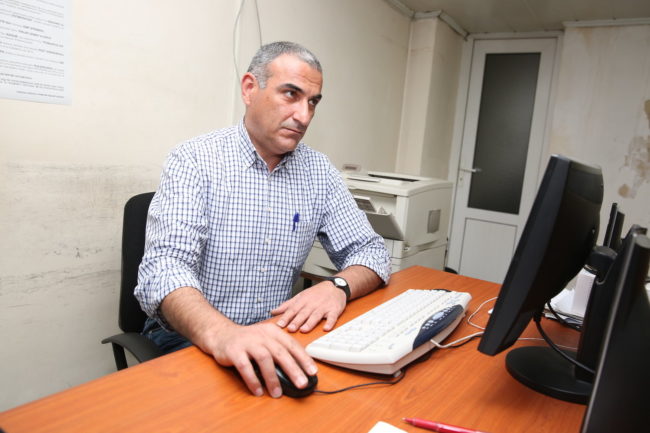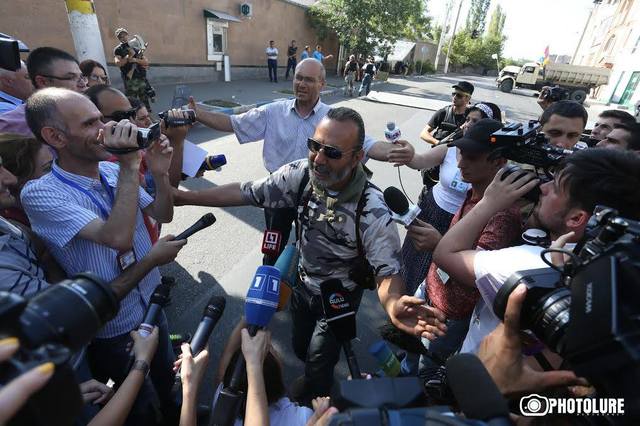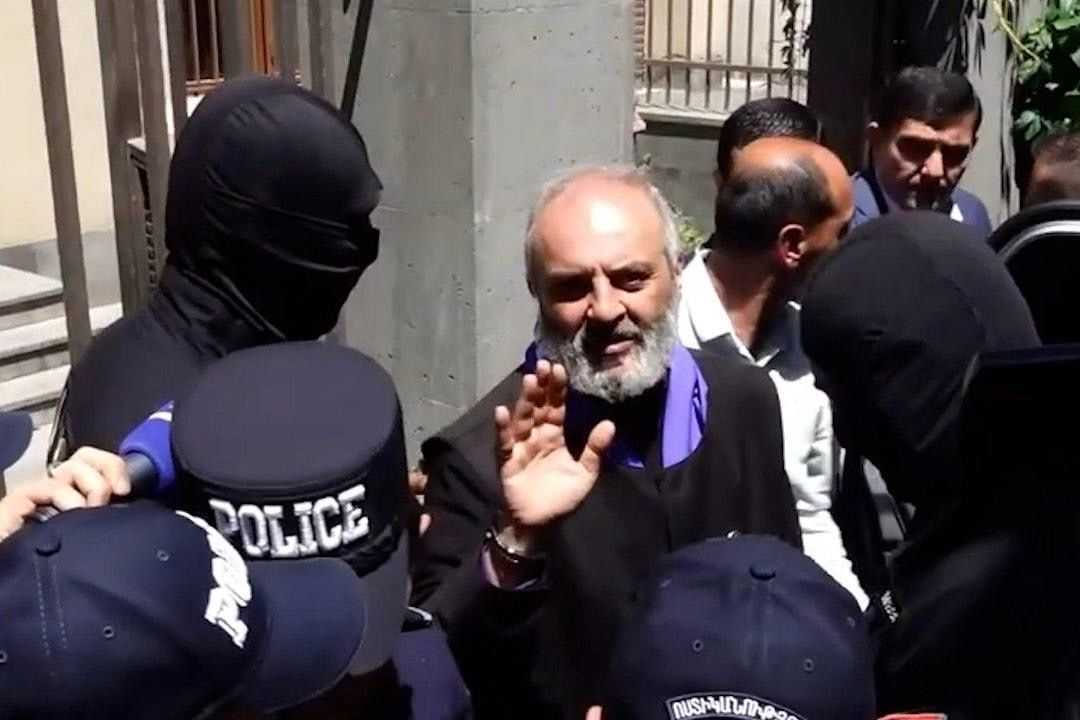
 On the eve of Armenia’s parliamentary elections this April, journalist Gegham Vardanyan found himself in what would be a crisis for any reporter — his Twitter account had been suspended.
On the eve of Armenia’s parliamentary elections this April, journalist Gegham Vardanyan found himself in what would be a crisis for any reporter — his Twitter account had been suspended.
But he was not alone. Aside from Vardanyan, the editor-in-chief of media-industry monitor Media.am, the accounts of non-profit media outlet Civilnet.am, investigative-news site Hetq.am and political analyst Stepan Grigoryan were suspended, too. All had been providing active coverage of the elections.
The outage — the apparent work of a Russian bot attack — only lasted a few hours, Coda Story has reported, but it underlined, for many Armenians, the importance of online sources of news and information during major national events.
That status came not just from technological change, but, ironically, from blockades established by the government itself. While the government does not routinely restrict online access, its thinking can change in times of crisis.
And Armenians respond accordingly.
Chai Khana provides below a retrospective.

Twitter Trouble
It all started with a hashtag. Active Armenian Twitter users had chosen #armvote2017 to disseminate coverage of the country’s April 2 parliamentary vote.
But a day before the elections, about a dozen fake Russian Twitter accounts began spreading fake news about the US Agency for International Development’s alleged intervention in the vote. They also used the #armvote2017 hashtag. Within a few hours, some of Armenia’s most active Twitter accounts covering the election and suspected violations of electoral law had been suspended.
That reaction is standard for accounts about which Twitter has received multiple complaints, noted Media.am’s Vardanyan. Nonetheless, it caused a shock.
Reputable Twitter users @reporterarm @CivilNetTV @Hetq_Trace @stepangrig suspended ahead of Parliamentary Elections in @Armenia https://t.co/5rHtbr3uMZ
— Artur Papyan (@ditord) April 1, 2017
“In the beginning, I was worried a little bit because, according to Twitter, my account could be recovered within 24 hours; that is to say, on the evening of election day. This would hinder the coverage of elections on that platform. We contacted one American media-security organization [Access Now] and the problem was solved. After four hours, all the suspended accounts were unblocked,” says Gegham Vardanyan.
2008 Information Blockade
Blocking Twitter accounts is a classic example of prohibiting journalists from doing their job. But governments as well as outside bots can cut off information.
On March 1, 2008, Armenia got its first taste of what it means to not be able to access reliable information online in the midst of a national news event.

That morning, violent street clashes broke out in Yerevan between police and protesters who rejected the February election of Prime Minister Serzh Sargsyan as president. A March 1, 2008 order by then President Robert Kocharyan announced a 20-day state of emergency and stipulated that media covering domestic politics and state affairs must only use information from official bodies.

For more than 20 days, Armenia’s media sector was paralyzed. No newspapers were printed, and leading independent news websites (notably, A1plus.am, aravot.am, azatutyun.am) were blocked. One of the main sources of information at that time, YouTube, where many Armenians actively watched the opposition’s promotional videos, disappeared as well.
A Comatose Press
The order put Armenia’s printed press into a coma as well. The Armenian Times Managing Editor Hayk Gevorgyan, 50, remembers the night of March 1. When Gevorgyan took the daily’s March 2 issue to the printers, the first person he met there was an officer from the National Security Service, Armenia’s intelligence agency.

“An officer — I guess, a captain from the National Security — was reading and checking the front page of our daily. Then, he would call somewhere for consultation and then prohibit our publishing. For exactly 20 days, we were working like this; taking prepared editions [of the paper] to the printers, [and] then getting a rejection. After several days of this, we lost our hope that we’d be published at all. We were taking the issue to the printers, then getting refused, drinking coffee with the National Security representative, [and] then coming back,” recounted Gevorgyan.
The paper’s website also was blocked. The Armenian Times’ newspaper and websiteonly resumed their work on March 21, one day after the state of emergency was lifted.

But the state of emergency contributed to more Armenians using the internet, Gevorgyan believes, as people tried to find ways to get around the information blockade and find reliable information about what was going on in their country. Relying on anonymous proxies, many internet users found ways around the blockade. Websites with non-Armenian domain names also were set up to publish materials by registered Armenian journalists, media outlets and citizen-journalists.

Even elderly people, who never before had used computers or the internet, headed to internet cafés to get news and information from sources not just channeling the government’s line.
Alternative News
The 20-day state of emergency contributed to the popularity of blogs as an alternative source of information. Most Armenian blogs on Livejournal, a frequently used blogging platform in Eurasia, actively covered the post-election situation.
Blogger Samvel Martirosyan, 44, an information-security expert, is also known as @kornelij. This nickname comes from his blog, kornelij.livejournal.com,which gained public attention during the March 2008 media-blackout.
“During the 2008 information blockade, traditional media outlets (printed press and websites) were not functioning, TV stations were controlled by the authorities and, according to the order signed by the president, they had to broadcast only official information. And as Livejournal wasn’t blocked in Armenia, many people started to read blogs and create their own. Besides opinions and analyses, on Livejournal one could also find reliable information about the events that were happening during the state of emergency,” recounted Martirosyan.
That trend, though, led to some rivalry. As has happened elsewhere, several journalists started blaming bloggers for infringing on their profession. The accusations stopped, Martirosyan said, when journalists started using bloggers’ posts and Facebook statuses as sources of information.


The ‘Daredevils of Sassoun’ and Facebook
Early in the morning on July 17, 2016, an armed group stormed a police station in Yerevan. The group announced on their Facebook page that they had started a revolution and asked users to join them. For about an hour, people within Armenia could not access Facebook.
As elsewhere in the Caucasus, Facebook is one of the main sources of information in Armenia. The social-media site reaches roughly 32% of the country’s more than 2.12 million internet users; the second highest rate in the region after Georgia, according to Internet World Stats.

Most leading Armenian media outlets attract their readers to their websites through Facebook, and rely on the platform’s status updates and postings for their own information.
That dependence on Facebook means that blocking the platform during emergencies can contribute to panic, asserts Civilnet.am Editor-in-Chief Karen Harutyunyan, 42.
The blockage of Facebook and a police attack on journalists livestreaming during a Yerevan protest over electricity prices prompted the Washington, DC-based rights organization Freedom House to downgrade Armenia’s 2016 ranking for internet freedom.
Media analyst Mesrop Harutyunyan, 57, a lecturer in media studies at Yerevan Brusov State University of Languages and Social Sciences, believes that, whatever the restrictions, journalists will always find ways to get information to their audiences.

‘Today, it is useless to block websites. How many of them should you block? It is impossible . . .To disconnect Armenians from online sources of information, a grandmother in Georgia should mistakenly cut through the internet cable which comes to Armenia [a reference to a 2011 event — ed]. Blocking is not a way out. I hope there never will be this kind of situation in Armenia again’, Mesrop Harutyunyan says.
Anti-Blocking Tools: What Do Armenians Use?
Armenians, including some of the journalists in this story, use a range of free apps and software to get news and information when a blockade is in place.
I start to use @PsiphonInc for surfing Facebook in Armenia.. it looks like blocked now
— Gegham Vardanyan (@reporterarm) July 17, 2016
Arguably the best known, TOR allows users to access blocked websites anonymously by diverting their internet to so-called “virtual tunnels,” a chain of private servers run by volunteers throughout the world. Security is TOR’s most cited weakness. The last connection between its chain of servers and the target destination is not encrypted.
Applications that work with a VPN (Virtual Private Network), which indirectly connects to the blocked website, provide both encryption and anonymity, but security ultimately depends on how the VPN treats its users’ data.
TunnelBear offers a free VPN (for accessing servers in 18 countries), but with restricted data. In a May 2017 review, PC magazine highly rated its security.
In mobile-obsessed Armenia, other options also are common. Veteran VPN Psyphon has been credited for its variety of censorship-dodging options, but is available for Android and Windows phones only. Owners of Apple devices often turn to Opera Free VPN, based in Canada, benefits, as PC World wrote, from strong Canadian privacy laws.
The article is a partner post written by Suren Stepanyan that first appeared on the website Chai Khana.






